The Outlaw of Torn
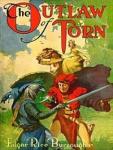
The story is set in 13th century England and concerns the fictitious outlaw Norman of Torn, who purportedly harried the country during the power struggle between King Henry III and Simon de Montfort. Norman is the supposed son of the Frenchman de Vac, once the king's fencing master, who has a grudge against his former employer and raises the boy to be a simple, brutal killing machine with a hatred of all things English. His intentions are partially subverted by a priest who befriends Norman and teaches him his letters and chivalry towards women.Otherwise, all goes according to plan. By 17, Norman is the best swordsman in all of England; by the age of 18, he has a large bounty on his head, and by the age of 19, he leads the largest band of thieves in all of England. None can catch or best him. In his hatred for the king he even becomes involved in the civil war, which turns the tide in favor of de Montfort. In another guise, that of Roger de Conde, he becomes involved with de Montfort's daughter Bertrade, defending her against her and her father's enemies. She notes in him a curious resemblance to the king's son and heir Prince Edward.Finally brought to bay in a confrontation with both King Henry and de Montfort, Norman is brought down by the treachery of de Vac, who appears to kill him, though at the cost of his own life. As de Vac dies, he reveals that Norman is in fact Richard, long-lost son of King Henry and Queen Eleanor and brother to Prince Edward. The fencing master had kidnapped the prince as a child to serve as the vehicle of his vengeance against the king. Luckily, Norman/Richard turns out not to be truly dead, surviving to be reconciled to his true father and attain the hand of Bertrade.
Related Books
-
 Work: A Stort Of ExperienceLouisa May Alcott
Work: A Stort Of ExperienceLouisa May Alcott -
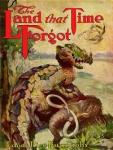 The Land That Time ForgotEdgar Rice Burroughs
The Land That Time ForgotEdgar Rice Burroughs -
 Jane EyreCharlotte Bronte
Jane EyreCharlotte Bronte -
 The Outlaw of TornEdgar Rice Burroughs
The Outlaw of TornEdgar Rice Burroughs -
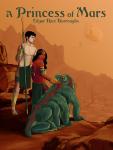 A Princess of MarsEdgar Rice Burroughs
A Princess of MarsEdgar Rice Burroughs -
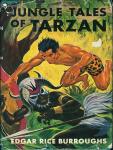 Jungle Tales of TarzanEdgar Rice Burroughs
Jungle Tales of TarzanEdgar Rice Burroughs -
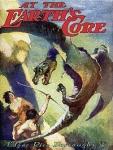 At the Earth's CoreEdgar Rice Burroughs
At the Earth's CoreEdgar Rice Burroughs -
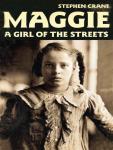 Maggie: A Girl of the StreetsStephen Crane
Maggie: A Girl of the StreetsStephen Crane
Author other works
-

The Land That Time Forgot
Edgar Rice Burroughs
This is an Edgar Rice Burroughs fantasy novel, the first of his Caspak trilogy. His working title for the story was "The Lost U-Boat." The sequence was first published in Blue Book Magazine as a three-part serial in the issues for September, October and November 1918. The complete trilogy was later combined for publication in book form under the title of the first part by A. C. McClurg in June 1924. Beginning with the Ace Books editions of the 1960s, the three segments have usually been issued as separate short novels. The first of these is treated in this article.The novel is set in World War I and opens with a framing story in which a manuscript relating the main story is recovered from a thermos off the coast of Greenland. It purports to be the narrative of Bowen J. Tyler, an American passenger with his Airedale terrier Nobs on a ship sunk in the English Channel by a German U-boat, U-33, in 1916. He is rescued by a British tugboat with another survivor, Lys La Rue. The tug is also sunk, but its crew manages to capture the submarine when it surfaces. Unfortunately, all other British craft continue to regard the sub as an enemy, and they are unable to bring it to port. Sabotage to the navigation equipment sends the U-33 astray into the South Atlantic. The imprisoned German crew retakes the sub and begins a raiding cruise, only to be overcome again by the British. A saboteur continues to guide the sub off course, and by the time he is found out it is in Antarctic waters.The U-33 is now low on fuel, with its provisions poisoned by the saboteur Benson. A large island ringed by cliffs is encountered, and identified as Caprona, a land mass first reported by the (fictitious) Italian explorer Caproni in 1721 whose location was subsequently lost. A freshwater current guides the sub to a stream issuing from a subterranean passage, which is entered on the hope of replenishing the water supply. The U-boat surfaces into a tropical river teeming with primitive creatures extinct elsewhere; attacked, it submerges again and travels upstream in search of a safe harbor. It enters a thermal inland sea, essentially a huge crater lake, whose heat sustains Caprona’s tropical climate. As the sub travels north along the island’s waterways the climate moderates and wildlife undergoes an apparent evolutionary progression.On the shore of the lake the crew builds a palisaded base, dubbed Fort Dinosaur for the area’s prehistoric fauna. The British and Germans agree to work together under Tyler, with Bradley, the mate from the tug, as second in command and Von Schoenvorts, the original sub commander, in control of the Germans. The castaways are attacked by a horde of beast men and take prisoner Ahm, a Neanderthal. They learn that the native name for the island is Caspak. Oil is discovered, which they hope to refine into fuel for the U-33. As they set up operations, Bradley undertakes various explorations. During his absence Lys disappears and the Germans mutiny again, absconding with the submarine.Tyler leaves the other survivors to seek and rescue Lys. A series of adventures ensues among various bands of near-human primitives, each representing a different stage of human advancement, as represented by their weaponry. Tyler rescues Lys from a group of Sto-lu (hatchet men), and later aids the escape of a woman of the Band-lu (spearmen) to the Kro-lu (bowmen). Lys is lost again, and chance discoveries of the graves of two men associated with Bradley’s expedition leaves Tyler in despair of that party’s fate. Unable to find his way back to Fort Dinosaur, he retreats to the barrier cliffs ringing Caspak in a vain hope of attracting rescue from some passing ship. Improbably reunited with Lys, he sets up house with her, completes the account of his adventures which he has been writing, and casts it out to sea in his thermos.
-
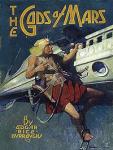
The Gods of Mars
Edgar Rice Burroughs
This book is a 1918 Edgar Rice Burroughs science fantasy novel, the second of his famous Barsoom series.At the end of the first book, A Princess of Mars, John Carter is unwillingly transported back to Earth. The Gods of Mars begins with his arrival back on Barsoom (Mars) after a ten-year separation from his wife Dejah Thoris, his unborn child, and the Red Martian people of the nation of Helium, whom he has adopted as his own. Unfortunately, Carter materializes in the one place on Barsoom from which nobody is allowed to depart: the Valley Dor, which is the Barsoomian afterlife.After John Carter's arrival, a boat of Green Martians on the River Iss are ambushed by the previously unknown Plant Men. The lone survivor is his friend Tars Tarkas, the Jeddak of Thark, who has taken the pilgrimage to the Valley Dor to find Carter. Having saved their own lives, Carter and Tars Tarkas discover that the Therns, a white-skinned race of self-proclaimed gods, have for eons deceived the Barsoomians elsewhere by disseminating that the pilgrimage to the Valley Dor is a journey to paradise. Most arrivals are killed by the beasts of Valley, and the survivors enslaved by Therns.Carter and Tars Tarkas rescue Thuvia, a slave girl, and attempt to escape, capitalizing on the confusion caused by an attack by the Black Pirates of Barsoom upon the Therns. During the attack, Tars Tarkas and Thuvia hijack a Black Pirate flier, while Carter fights his way aboard another, killing all but one of the Pirates, and rescuing a captive Thern princess. From the captured Pirate Xodar, Carter learns that the Black Pirates, called the "First Born", also think of themselves as gods, and accordingly prey upon the Therns; and additionally identifies the captive Thern as Phaidor, daughter of the "Holy Hekkador" (high priest) of the Therns. When their flier is recaptured by the First Born and taken to their realm of Omean, Carter is taken before Issus, the self-proclaimed goddess of Barsoom, who dictates the Therns through secret communications which they mistake for divine revelation.Issus takes Phaidor as a handmaiden for one Martian year; whereas Carter is imprisoned, with Xodar as his slave as punishment for being defeated by Carter. Thereafter Carter treats him with honor, and thus gains his friendship. In prison, they encounter a young man later identified as Carter's son Carthoris, with whom Carter is taken to a series of games wherein the previous year's handmaidens are eaten by Issus and her nobles. Carter leads a revolt of the prisoners, killing many of the First Born; and upon the suppression of their revolt, he and Carthoris escape via underground tunnels, and give themselves to guards unacquainted with the revolt to be returned to their prison. Upon hearing of the revolt, Xodar rejects Issus’ divinity and joins the others in escape. Upon later abandoning their aircraft, they encounter Thuvia, who describes the capture of Tars Tarkas by the green warriors of Warhoon (a clan rival to his own). Carter goes to rescue Tars Tarkas, but is discovered by his enemies. After a chase, Thuvia is sent on alone mounted while the men attempt a stand against the Warhoons. They are rescued by the Heliumetic navy but do not find Thuvia. Commanding one of the warships is Carter’s friend Kantos Kan but the fleet is commanded by Zat Arras, a Jed (chieftain) of the hostile client state of Zodanga, and Carter is suspected of returning from Valley Dor, which is punishable by death. Tardos Mors, the Jeddak of Helium, and Mors Kajak, the Jed of Hastor (the grandfather and father, respectively, of Dejah Thoris, and thus Carter’s in-laws) are absent from Helium, having led fleets in search of Carthoris. Later, Carter discovers that Dejah Thoris may have taken the pilgrimage to the Valley Dor to find him.Upon returning to Helium, Carter is tried for heresy by the Zodangans; but the people of Helium do not tolerate this, and Carter is held prisoner for 365 days until his son frees him. Thereafter he goes to rescue Dejah Thoris but is kidnapped by the Zodangans. Carter refuses Zat Arras’ offer of freedom in exchange for endorsing Zat Arras as Jeddak of Helium, and is imprisoned. After half a (Barsoomian) year, Carter escapes, and embarks to Omean, with secretly raised troop levies, ships, and soldiers lent by Tars Tarkas. Near Omean Carter is challenged first by the Therns; secondly by Zat Arras; and lastly by the First Born, whereupon Carter causes the Therns and First Born to fight one another, and the Heliumetic crews of the Zodangan fleet mutiny in support of Carter. Thereafter the Heliumites and Tharks defeat the First Born, and Issus herself is killed. But Dejah Thoris, Thuvia, and Phaidor are imprisoned in the Temple of the Sun, of whose rooms each opens only once per year. Immediately before their room closes, Phaidor attempts to kill Dejah Thoris, and her success or failure are left unknown. The story is thence continued in the third book of Burroughs’ Martian series, The Warlord of Mars.
-
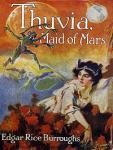
Thuvia, Maid of Mars
Edgar Rice Burroughs
This is a science fantasy novel by Edgar Rice Burroughs, the fourth of the Barsoom series. The principal characters are the Son of John Carter of Mars, Carthoris, and Thuvia of Ptarth, each of whom appeared in the previous two novels.In this novel the focus shifts from John Carter, Warlord of Mars, and Dejah Thoris of Helium, protagonists of the first three books in the series, to their son, Carthoris, prince of Helium, and Thuvia, princess of Ptarth. Helium and Ptarth are both prominent Barsoomian city state/empires, and both Carthoris and Thuvia were secondary characters in the previous novel.Its plot devices are similar to the previous Martian novels, involving the kidnapping of a Martian princess. This time John Carter's son Carthoris is implicated. It does however have some inventive and original ideas, including an autopilot and collision detection device for Martian fliers, and the creation of the Lotharians, a race of ancient martians who have become adept at telepathic projection, able to create imaginary warriors that can kill, and sustain themselves through thought alone.Carthoris is madly in love with Thuvia. This love was foreshadowed at the end of the previous novel. Unfortunately Thuvia is promised to Kulan Tith, Jeddak of Kaol. On Barsoom nothing can break an engagement between a man and woman except death, although the new suitor may not cause that death. Thus it is that Thuvia will have none of him. This situation leaves Carthoris in a predicament.As Thuvia suffers the common Burroughsian heroine's fate of being kidnapped and in need of rescue, Carthoris' goal is abetted by circumstances. Thus he sets out to find the love of his life. His craft is sabotaged and he finds himself deep in the undiscovered south of Barsoom, in the ruins of ancient Aanthor. Thuvia's kidnappers, the Dusar, have taken her there as well, and Carthoris is just in time to spot Thuvia and her kidnappers under assault by a green man of the hordes of Torquas. Carthoris leaps to her rescue in the style of his father.The rescue takes Carthoris and his love to ancient Lothar, home of an ancient fair-skinned human race gifted with the ability to create lifelike phantasms from pure thought. They habitually use large numbers of phantom bowmen paired with real and phantom banths (Barsoomian lions) to defend themselves from the hordes of Torquas.The kidnapping of Thuvia is done in such a way that Carthoris is blamed. This ignites a war between the red nations of Barsoom. Carthoris must try to be back in time with Thuvia to stop the war from breaking loose. Carthoris wonders if his love will ever be requited by the promised Thuvia.
-
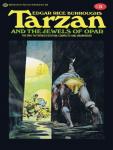
Tarzan and the Jewels of Opar
Edgar Rice Burroughs
This book is a novel written by Edgar Rice Burroughs, the fifth in his series of books about the title character Tarzan.In the previous novel Tarzan and Jane's son, Jack Clayton, a.k.a. Korak, had come into his own. In this novel Tarzan returns to Opar, the source of the gold where a lost colony of fabled Atlantis is located, in order to make good on some financial reverses he has recently suffered. While Atlantis itself sank beneath the waves thousands of years ago, the workers of Opar continued to mine all of the gold, which means there is a rather huge stockpile but which is now lost to the memory of the Oparians and only Tarzan knows its secret location.A greedy, outlawed Belgian army officer, Albert Werper, in the employ of a criminal Arab, secretly follows Tarzan to Opar. There, John Clayton loses his memory after being struck on the head by a falling rock in the treasure room during an earthquake. On encountering La, the high priestess who is the servant of the Flaming God of Opar, and who is also very beautiful, Tarzan once again rejects her love which enrages her and she tries to have Tarzan killed; she had fallen in love with the apeman during their first encounter and La and her high priests are not going to allow Tarzan to escape their sacrificial knives this time.In the meanwhile, Jane has been kidnapped by the Arab and wonders what is keeping her husband from once again coming to her rescue. A now amnesiac Tarzan and the Werper escape from Opar, bearing away the sacrificial knife of Opar which La and some retainers set out to recover. There is intrigue and counter intrigue the rest of the way.
-
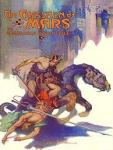
The Chessmen of Mars
Edgar Rice Burroughs
This is an Edgar Rice Burroughs science fantasy novel, the fifth of his famous Barsoom series.In this novel Burroughs focuses on a younger member of the family established by John Carter and Dejah Thoris, protagonists of the first three books in the series. The heroine this time is their daughter Tara, princess of Helium, whose hand is sought by the gallant Gahan, Jed (prince) of Gathol. Both Helium and Gathol are prominent Barsoomian city states.Tara meets Prince Gahan of Gathol, and is initially unimpressed, viewing him as something of a popinjay. Later she takes her flier into a storm and loses control of the craft, and the storm carries her to an unfamiliar region of Barsoom. After landing and fleeing from a pack of ferocious Banths (Martian lions), she is captured by the horrific Kaldanes, who resemble large heads with small, crab-like legs. The Kaldanes have bred a symbiotic race of headless human-like creatures called Rykors, which they can attach themselves to and ride like a horse. While imprisoned, Tara manages to win over one of the Kaldanes, Ghek, with her lovely singing voice.Gahan, who has fallen in love with Tara, sets out to find her, only to find himself caught up in the same storm, and he falls overboard while attempting to rescue one of his crew. He stumbles upon Bantoom, realm of the Kaldanes, and manages to rescue Tara, and together with Ghek they flee in Tara's crippled flier. Tara doesn't recognize Gahan as the prince she met earlier, as he is worn from his ordeals and no longer dressed in his fancy clothes. In light of her earlier reaction to him, Gahan decides to keep his identity secret, and identifies himself instead as a Panthan (warrior) called Turan.The three of them manage to reach the isolated city of Manator. Gahan ventures into the city seeking food and water, but is tricked and taken prisoner by the inhabitants. Tara and Ghek are also captured. In Manator, captives are forced to a fight to the death in the arena, in a modified version of Jetan, a popular Barsoomian board game resembling Chess; the living version uses people as the game pieces on a life-sized board, with each taking of a piece being a duel to the death.